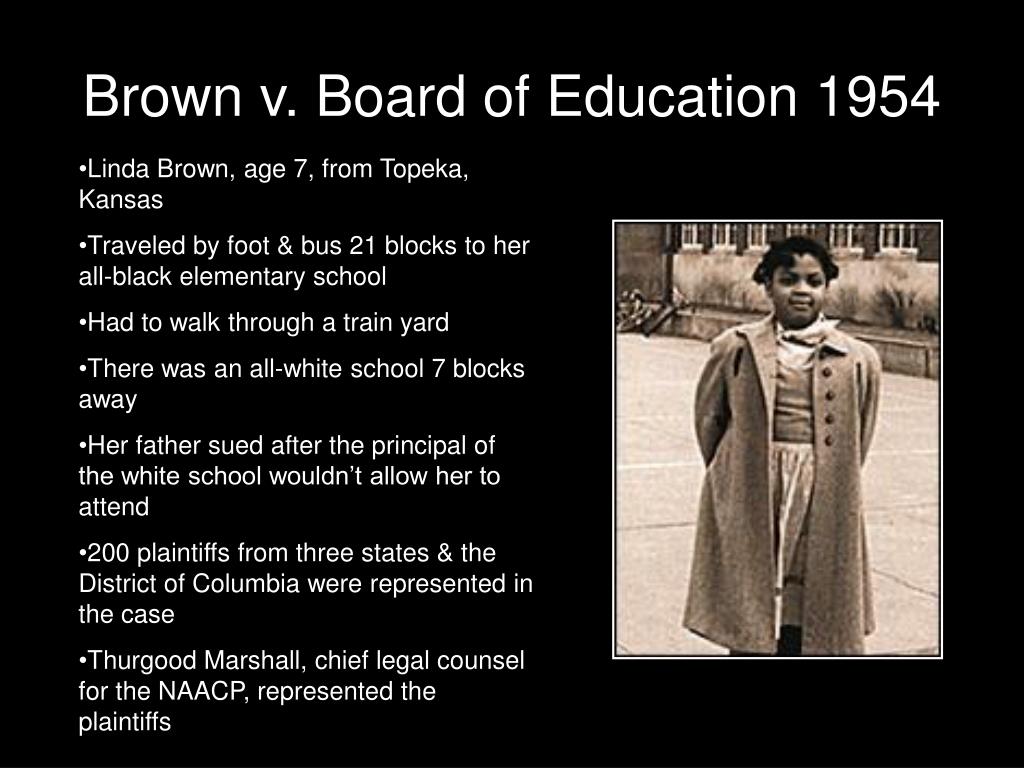
Despite differing somewhat in the details, all alleged a violation of the equal protection clause of the 14th Amendment. In 19, lawsuits were filed in Kansas, South Carolina, Virginia, Delaware and the District of Columbia on behalf of Black elementary school students who attended legally segregated schools. Board of Education started off as five cases.

Many southern Black schools therefore lacked such basic necessities as cafeterias, libraries, gymnasiums, running water and electricity. In 1954, southern Black schools received only 60 percent of the per-pupil funding as southern white schools, up from 45 percent in 1940. Ferguson decision, in reality they were anything but. Although Black and white schools were supposed to be “separate but equal” in accordance with the Supreme Court’s 1896 Plessy v. An additional four states-Arizona, Kansas, New Mexico and Wyoming-permitted local communities to do the same.

Board of Education ruling, 17 southern and border states, along with the District of Columbia, required their public schools to be racially segregated.

states segregated their schools by law.Īt the time of the Brown v.


 0 kommentar(er)
0 kommentar(er)
